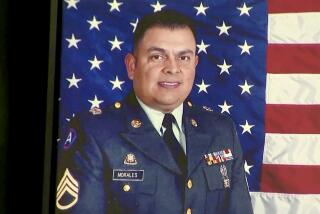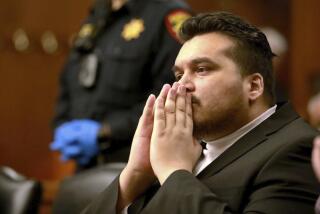In quiet Goleta, where Golden State Killer’s bloody path turned south, prosecutors say they finally have their man
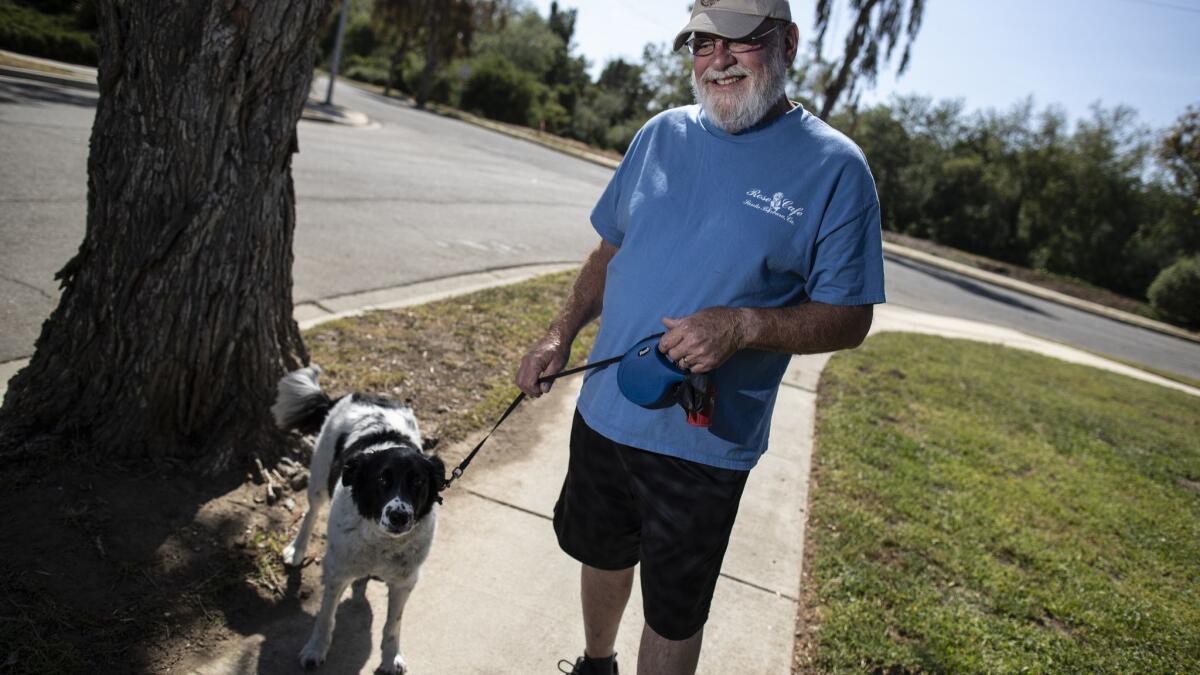
The San Jose Creek snakes its way down from the Santa Ynez Mountains to the Pacific Ocean, cutting through sleepy seaside neighborhoods. Ranch-style homes sit along the creek’s heavy brush and trees, among playgrounds and open space.
The serene setting was ideal for the Golden State Killer.
In 1979 and 1981, in what marked his first forays into Southern California, the elusive serial killer struck Santa Barbara County twice, slaying four people in attacks that some neighbors say shattered the suburban innocence of the coastal area. Now, prosecutors say they have found their suspect.
Joseph James DeAngelo Jr., 72, who is now accused in a dozen slayings up and down the state, was formally charged Thursday in the Santa Barbara County attacks the Golden State Killer carried out decades ago — two years and less than half a mile apart.
“Violent cold cases never grow cold for the victims or their loved ones,” said Dist. Atty. Joyce Dudley. “We never stopped hoping or believing an arrest would be made.”
On Friday, Dudley is meeting with prosecutors across the state to consider whether to try DeAngelo in one location for all 12 killings.
Detectives in Santa Barbara County began piecing together a case against DeAngelo shortly after learning that he was arrested in a Sacramento suburb April 24. Santa Barbara County Sheriff Bill Brown sent investigators north to look at potential ties between DeAngelo and the killings in Southern California.
Authorities have been tight-lipped about their progress, though they say they’ve had success. DeAngelo’s work and residential history put him in Central and Northern California at the times of a wave of violent crimes in those areas, but ties to him farther south have been more difficult to trace.
Prosecutors say that on Dec. 30, 1979, DeAngelo found Robert Offerman and Alexandria Manning in bed at their Goleta-area home, bound them and eventually shot them both. It marked the Golden State Killer’s first deadly attack in a community where everyone knew everyone else, whether through booster clubs or basketball games.
“We were always lax about that because it’s a nice neighborhood,” said Jane Honikman, 72, who lived nearby. “You trust people here.”
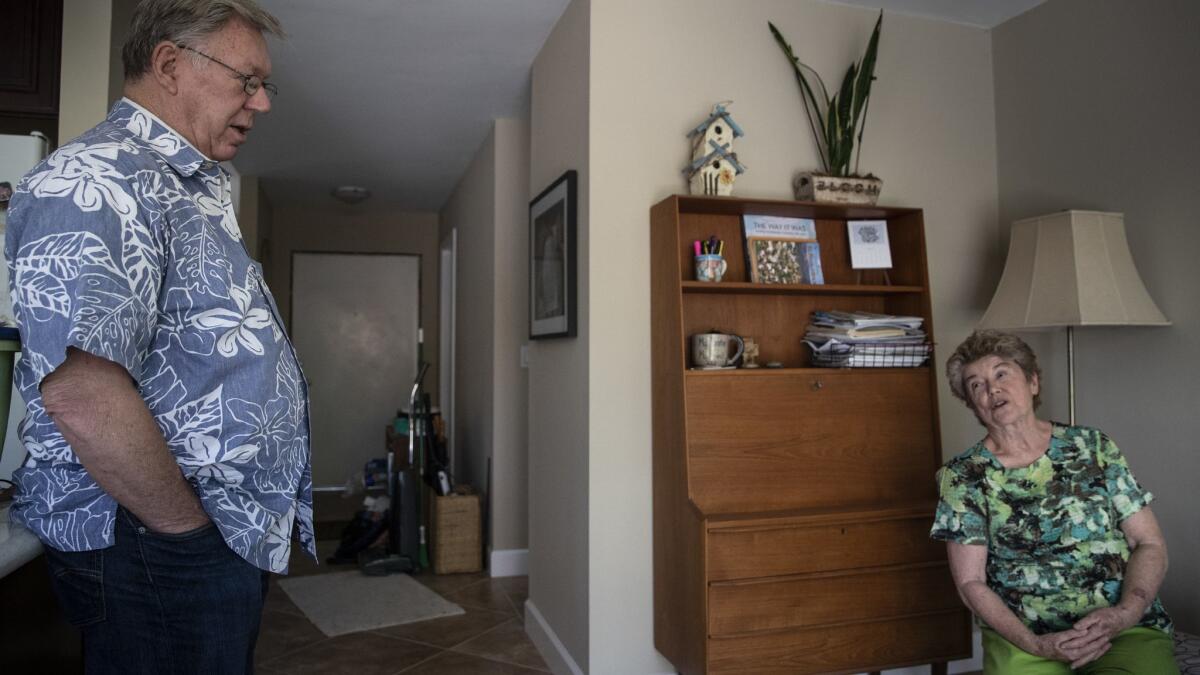
The killer’s choice of neighborhood fit a pattern: He hit newer postwar tracts in middle-class, low-crime areas near open space, perfect for stalking and stealthy escapes.
Two years later, after similar attacks farther south, authorities say, he struck Santa Barbara County again. On July 27, 1981, the killer sneaked into a barn-like home. When he ran into Gregory Sanchez in a hallway, the attacker raised his gun and shot the man in the face.
But the wound didn’t kill Sanchez.
As the gunman continued his attack on Cheri Domingo, tying her up, raping and bludgeoning her, Sanchez — who, at 27, was younger and bigger than the intruder — regained consciousness and fought back.
Ultimately, both Sanchez and Domingo were beaten to death. A retired investigator said the fight may have scared the killer into avoiding such risky attacks.
At a community meeting two days later, neighbors said it seemed the killer was targeting unmarried couples. They entertained the idea of making their marital status more obvious.
“Maybe we should put a big ol’ sign on our garage door that says, ‘We’re married,’ and maybe the guy won’t come,” Richard Chayra, 74, recalled saying at the time.
“You didn’t sleep much because you were afraid this guy was going to come into your house,” he added. “Everyone was on edge.”
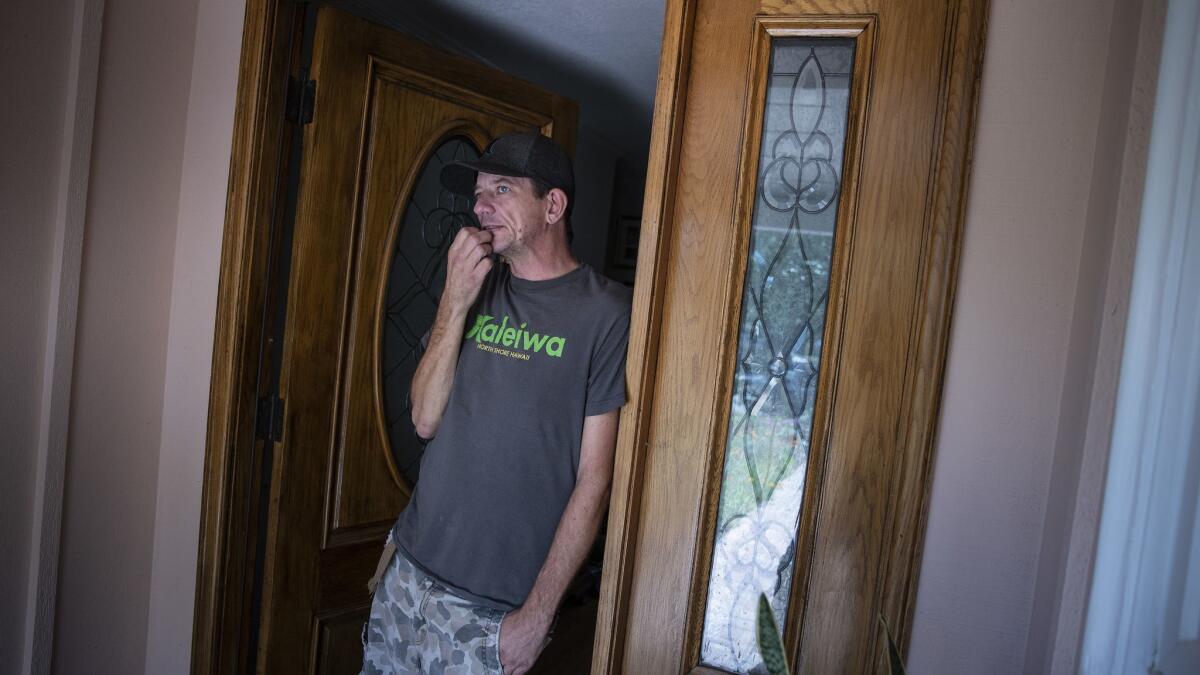
Among younger people in school, rumors circulated that the murders were tied to bad drug deals.
Chayra’s wife babysat for someone who had been raped in the Golden State Killer’s earlier attacks in Sacramento. The couple moved from Sacramento to the Goleta area, thinking they had put the terror behind them. Their new neighborhood seemed calmer, and the schools were better.
Then the first slayings occurred near Goleta.
Mac Sanborn, 68, said the attacks stunned the family-friendly neighborhood, where kids played on streets and it didn’t seem necessary to close doors.
“This is a very safe neighborhood; we really don’t have any problems with intruders or anything like that,” Sanborn said.
But after the attack, neighbors began locking their doors and asked police to ramp up patrols. At least one neighborhood watch group formed. A single mom installed a security system that included outdoor motion sensors and a panic button right above her bed. Security bars were installed on the rear windows of the condominium where Offerman and Manning were killed.
Over the years, detectives, some retired, would revisit the area, looking for answers to questions that haunted them.
It took an innovative — and some say controversial — approach of comparing crime scene DNA to publicly available genealogy databases to home in on a handful of suspects.
Once DeAngelo’s name came up, investigators watched him until they surreptitiously obtained two samples of his DNA to compare with their evidence.
The results came back a match, authorities said, and DeAngelo was arrested at his home in Citrus Heights. The other suspects were dead ends.
“The best that I can say about law enforcement agencies is that detectives didn’t close the case,” said Goleta resident Linda Rouhas. “Private detectives, retired detectives, detectives with the law enforcement agencies never gave up.”
Serna reported from Santa Barbara, Vives from Goleta and Tchekmedyian from Los Angeles.
joseph.serna@latimes.com | Twitter: @JosephSerna
ruben.vives@latimes.com | Twitter: @LATvives
alene.tchekmedyian@latimes.com | Twitter: @AleneTchek
More to Read
Start your day right
Sign up for Essential California for news, features and recommendations from the L.A. Times and beyond in your inbox six days a week.
You may occasionally receive promotional content from the Los Angeles Times.
